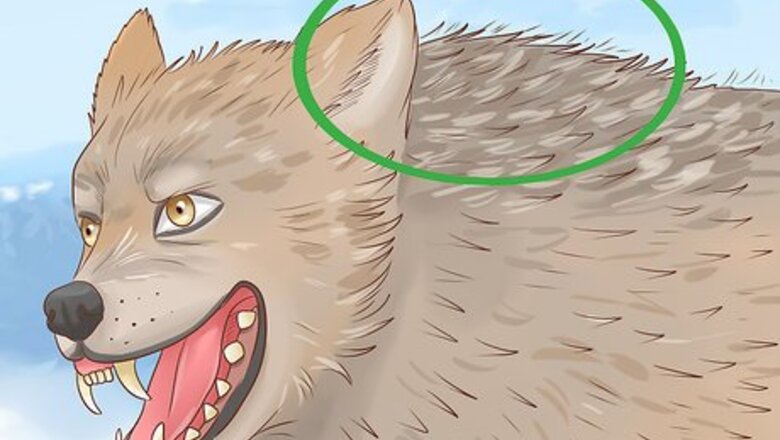
views
Signs of Aggressiveness
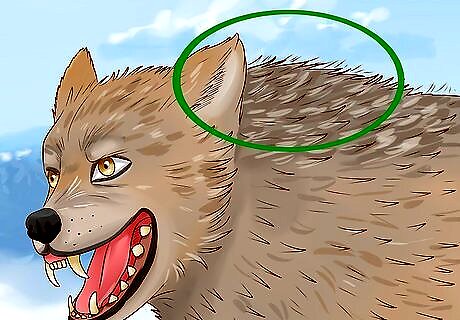
Check the wolf's fur. The wolf's hackles will be raised if it's feeling aggressive or angry.
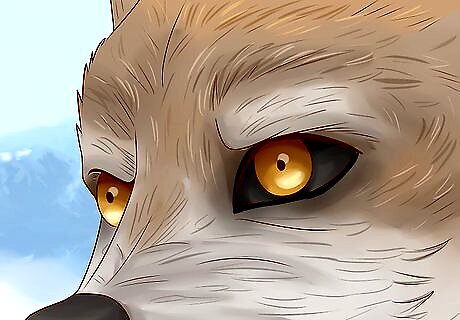
Look at the wolf's eyes. The eyes should be widened, taking on a more wild look, and staring straight at whoever it's feeling aggressive towards.
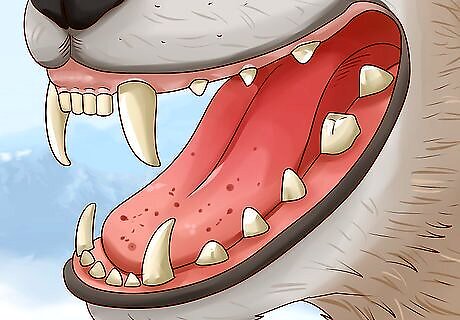
Look at the wolf's mouth. Check if the wolf's lips are retracted and it's baring its teeth. The fangs and gums should be showing and the tongue should be curled back.

See if the wolf is performing the ambivalence display. The wolf will bare its teeth and gums and stick out its tongue. It will also bush out its fur to appear larger and more intimidating.
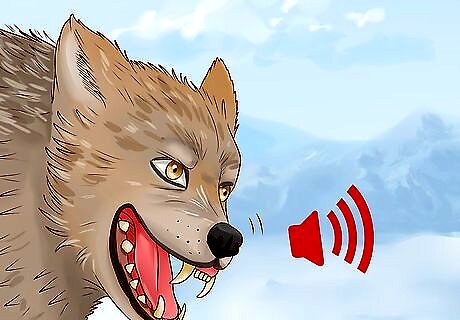
Listen for growling or snarling. Wolves will growl or snarl when they are feeling aggressive towards someone, such as another wolf. They will do this while their lips are curled back and their teeth are bared.
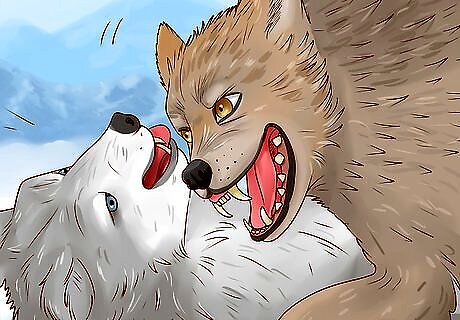
See if a wolf pins down another wolf. If the wolf is feeling especially aggressive towards the other, and there are multiple wolves in the area, they may snap at their enemy's vulnerable areas, such as the throat and stomach, which may kill the pinned wolf. Usually, wolves will only pin the other wolf down to prove themselves dominant.
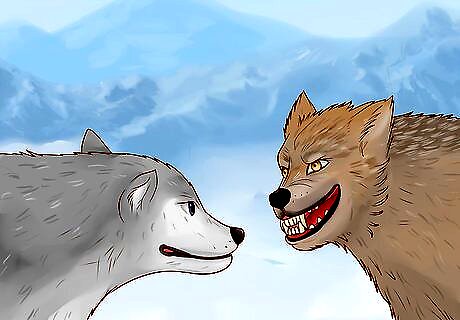
See if the wolf snaps its teeth at another wolf. If there are multiple wolves in the area, a wolf may snap its teeth quickly at the other wolf that it is feeling aggressive towards. They may or may not make contact with the other wolf, however. While doing this, the wolf will take on an untamed look and curl its lips back to bare its teeth threateningly to the other wolf. This is more of a caution than an attack on the other wolf, since the teeth don't usually make contact with any fur or flesh.

Look at the wolf's nose. The skin on the nose should shrink as the skin on the snout curls back.
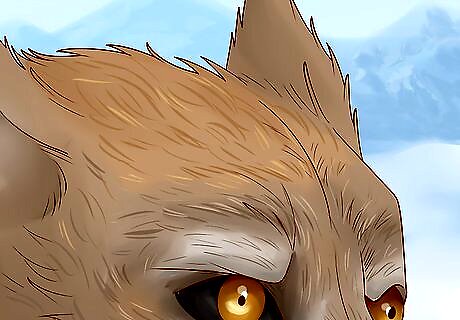
Look at the wolf's forehead. The skin should be shortened and folded slightly over the eyes, in a frown.
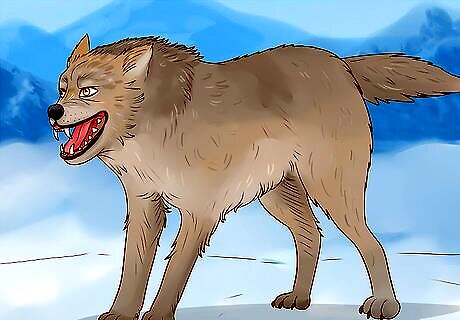
Check the wolf's posture. The head should be held high in the air and the eyes should be gazing directly at whoever the wolf is feeling aggressive towards. The body should be drawn to its fullest height and the wolf's neck should be arched.

Check the wolf's tail. The wolf's tail should be held high and vibrating slightly while the wolf is feeling aggressive.
Signs of Dominance
See if the wolf is performing an ambivalence display. If the dominant wolf is feeling aggressive, fearful, or trying to assert dominance over another wolf, it may perform the ambivalence display. This is a combination of the wolf making its fur stand on end, widening its eyes, and baring its teeth, gums, and tongue as a warning to other wolves, not to challenge him/her.
Watch the wolf stroll around its pack in a dominant fashion. Usually the dominant wolf will be the one striding around its pack with its head and ears held high and its eyes firm. Its tail should also be raised to the same height as its spine. As the dominant wolf winds through its pack, it may stop at a subordinate wolf, expecting respect from the wolf in an act of submission. The wolf may then perform active submission to the dominant leader (later explained).
See if a wolf is fighting with another wolf. One of the wolves may be the dominant one trying to gain control over a challenger. If the current dominant wolf is fighting with a subordinate wolf, depending on who wins, the dominant wolf will be the one standing with the other wolf pinned underneath them. If the subordinate wins, they become the dominant wolf of the pack and the previous dominant wolf will usually leave the pack and start one of their own. In a deadly fight, however, a wolf may kill the other once their vulnerabilities are exposed. The pack leader may also snap at another wolf (without the teeth making contact) as a warning to the other wolf not to challenge them. Any other wolf may also do this when they are feeling aggressive toward another wolf.
See if the wolf is 'flagging'. This usually means they are the dominant wolf. This is shown by a raised tail (a tail stuck straight up in the air, for instance). A wolf in a pack with a raised tail is usually the dominant figure - the alpha. A submissive wolf may sniff the under tail of the dominant wolf in greeting or as a sign of submission.
Watch if the wolf places his head on top of other members' heads. The dominant figure may also lay his head on a subordinate one's head as it parades around its pack to remind that wolf that he/she is the dominant figure and that they shouldn't challenge him/her.
Look at the way the wolf is standing. Usually, the dominant wolf will stand with their legs firm, and they'll be drawn to their full height.
Look at the wolf's tail. The dominant wolf's tail may be held up and curled toward its back.
Watch if a wolf is performing active submission to another wolf. The wolf who is accepting this act of submission will be the dominant wolf, who should be gazing directly ahead with its head raised and fur erect.
Watch if a wolf is performing passive submission to another wolf. The wolf who is accepting this act of submission will be the dominant wolf. While the submissive wolf is lying down on its back, the dominant wolf will bend over it and lick the muzzle, throat, genitals, and anus of of the subordinate wolf.
Watch if a wolf is performing a certain physical action to a subordinate wolf. The dominant wolf may stand on a subordinate wolf's hind legs, gaze at it with a direct stare, or rear up on its shoulders. Each of these actions remind the subordinate wolf to respect him/her. They may be used to warn the other wolf not to challenge the dominant figure.
Signs of Ease
Look for a drooped tail. A drooped tail can indicate that a wolf is feeling relaxed. The more the tail is drooped, and the lower it is, the more relaxed the wolf is feeling. This is not to be confused with a tail that's tucked beneath their legs. A tucked tail indicates submission.
Look around for any wolves that may be chasing each other. If wolves chase each other (without any signs of hostility) with their bodies relaxed and they attempt to grab each others' tails playfully, they may be at ease.
Look around for a stretching wolf. If a wolf stretches, they may be relaxed. A wolf may also yawn after doing this, which may mean they are at ease as well.
See if there are any wolves lying down on their sides. A wolf lying down on its side comfortably may mean it is relaxed.
Look for a wagging tail. A wagging tail can also mean a wolf is sound.
Look for signs of a wolf looking relaxed while running. This can also mean a wolf is feeling playful. Its head will be raised, ears in a neutral position, and its tail will be hanging out freely or sticking straight out, level with its back as it runs. It may be feeling relaxed while hunting or playing with other wolves.
Check the wolf's eyes. Its expression will look relaxed as well as its brow and forehead.
Look for smoothed fur. If a wolf is at ease, its pelt will be completely flattened.
Check the position of the wolf's ears. They'll either be raised or facing forward.
Look at the wolf's mouth. A wolf that is at ease will either have a closed or slightly opened mouth.
Signs of Submissiveness
Look for signs of passive submission. There are two versions of passive submission. The first version of passive submission is while the wolf lies on its back. A wolf will drop down on their back and show their throat and belly to the dominant figure. Showing their vulnerabilities is a sign of trust and respect. When a dominant figure is present, the submissive wolf lowering his/her head and shoulders can indicate acknowledgment of their superiority. The subordinate wolf will also tuck its paws over its chest and may also whimper. If the dominant figure is showing more aggression towards the lower ranked wolf than usual, the lower ranked wolf may urinate. Its tail with either be tucked in or out. The dominant wolf will then lick the muzzle, throat, genitals, and anus of the submissive wolf. The second version of passive submission is while the wolf is crouching. The submissive wolf will simply crouch down with its ears smoothed down against its lowered head. It will curl in its tail and rear. This is similar to active submission except the dominant wolf will not nuzzle or lick the subordinate one.
Look for signs of active submission. In active submission, a wolf will drop their hindquarters and lower their shoulders, craning their neck to lick the alpha's mouth, nose, chin, and muzzle. This is also a sign of submission, and similar to the way puppies will lick an older wolf's mouth to receive food. The tail of the lower ranked wolf may be curled in or wagging. It may also curve its back and tail. The more the back and tail are curved, the greater the submission towards the dominant wolf. The dominant wolf will look directly ahead with its fur erect while accepting the submissive wolf's acknowledgement of the alpha's dominance in the pack.
See if a wolf is presenting its under tail to another. The wolf displaying its under tail to the dominant figure is the subordinate one, in a sign of submission. This is usually done during passive submission while the wolf is lying down on its back. However, the dominant wolf may also do this as a sign of dominance and the subordinate will sniff the under tail of the wolf in a sign of submission or greeting.
See if a wolf is extending its tongue forward. A wolf may extend its tongue straight forward several times quickly to the dominant wolf in a sign of submission.
See if a wolf is facing another wolf while showing different signs of fear. The wolf may tuck its tail between its legs, lower its head, flatten its ears, and whimper or bark in fear when facing the dominant figure.
Look for signs of uncertainty. The wolf's ears will be flattened against its head but pointing forward. The forehead will be puckered and the brow will be elevated. The eyes will be narrowed and looking cross. The muzzle and nose may be puckered while the teeth are bared and the tongue is stuck out between them. The fur will be raised and the tail will be lowered or tucked in between its legs. While feeling uncertainty, the wolf is confused as to whether it should submit to the dominant wolf or to fight. It can also mean that the wolf is confused as to whether it should fight or flee. While in a position of uncertainty, it may mean the wolf is about to give in to the dominant wolf.
Signs of Fear
See if a wolf is trying to make itself appear smaller than they really are. To do this, the wolf may lower its head, flatten its ears, and tuck in its tail. Its fur may also be flattened. The wolf may also whimper or bark to indicate fear.
Look at the wolf's eyes. If the wolf is feeling fearful, it should be looking away and its eyes should be almost completely shut.
Look at the wolf's ears. The ears should be flattened and facing the side. This can also indicate defensiveness.
Look at the wolf's mouth. The wolf's mouth should be in a partially closed submissive grin. The wolf's teeth and gums should not be exposed, however, the tongue should be extended. If a wolf is feeling defensive toward another wolf, however, the wolf will perform the ambivalence display (teeth and gums bared and lips curled back) to try to warn the other wolf off.
Check the wolf's nose. The nose should be relaxed and the skin smooth.
Look at the wolf's neck. The neck should be craned forward while the head is lowered.
Check the wolf's tail. The tail should be either curled under the fearful wolf's body or wagging.
Check the wolf's back. If the back is curved slightly, the wolf may be feeling fearful.
Signs of Playfulness
Look for signs of a wolf doing the play bow. When a wolf is feeling playful, often they will bow down with their hindquarters in the air, their head held high, and their forepaws stretched forward on the ground. This is similar to the way a domestic dog will indicate playfulness. The wolf's tail may also wag or stick straight out.
Look for signs of them looking relaxed while running. A wolf looking relaxed while running may also mean they are feeling playful as other wolves chase them. When a wolf runs, looking relaxed, they may be playing with other wolves or chasing down prey. The wolf's head will be raised, its ears in a position between flattened and raised, and its tail hanging out freely or level with its back.
See if multiple wolves chase each other while attempting to grab each other's tails. Usually this indicates playfulness rather than aggressiveness. The wolves will race each other while the wolf behind will attempt to playfully grab the leading wolf's tail.
See if the wolf's tail is wagging and held high. A wagging tail can indicate the wolf is feeling playful, just as it may in dogs.
See if the wolf's tongue appears through its mouth. Like dogs, if the tongue is lolling out of the wolf's mouth, it may be feeling playful. The wolf may also pant.
See if the wolf is frolicking alongside other wolves. This may mean the wolf is feeling playful as it is playing with other wolves in the pack.
Signs of Happiness
Look at the position of the ears. The wolf's ears will either be in a position between flattened and completely raised or simply laid back.
Look at the wolf's forehead. When feeling happy, the wolf's forehead fur will be completely smooth with the brow slightly elevated.
Check the wolf's eyes. The eyes will contain an expression of ease or they may be widened.
Observe the wolf's mouth. The muzzle will be loosened and the jaw lowered. Like dogs, the wolf may be panting while happy.
Look at the wolf's fur. The fur will either be smoothed or slightly erect if the wolf is feeling happy.
Look at the wolf's tail. The tail may be slightly lowered and curved or it may be lifted slightly higher while wagging.
Signs of Depression
Look for lowered ears in a wolf. If a wolf's ears are lowered or facing backward, it may mean they are feeling depressed.
Look for a puckered forehead. If a wolf is depressed, its forehead may be furrowed or smooth.
Observe the wolf's gaze. Usually a depressed wolf's eyes will be cast downward.
Check the wolf's muzzle. The muzzle will look relaxed, however the lips will seem to droop downward.
Check the wolf's fur. A depressed wolf's fur will be slightly erect.
Check the position of the tail. The wolf's tail may be drooping straight downward, or curled along its hip.
Signs of Anxiousness
Look for flattened ears. The wolf's ears will be lowered against the head, however they will be pointing outward.
Check the wolf's forehead. An anxious wolf's forehead will be corrugated.
Look for narrowed eyes. If a wolf appears to be squinting, they are feeling anxious.
Check the wolf's muzzle. The muzzle of an anxious wolf will be quivering and the lips will be retracted. However, the wolf's teeth won't be bared.
Look at the wolf's pelt. The fur may be slightly erect while the wolf is feeling anxious.
Check the position of the tail. There are several different positions a wolf can take while it is feeling anxious depending on how much anxiety it is feeling at the moment: Tail straight upward and pointing to the side while flicking slightly Tail lowered and pointing to the side Tail straight down and pointing to the side



















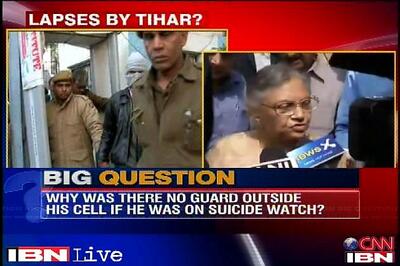
Comments
0 comment